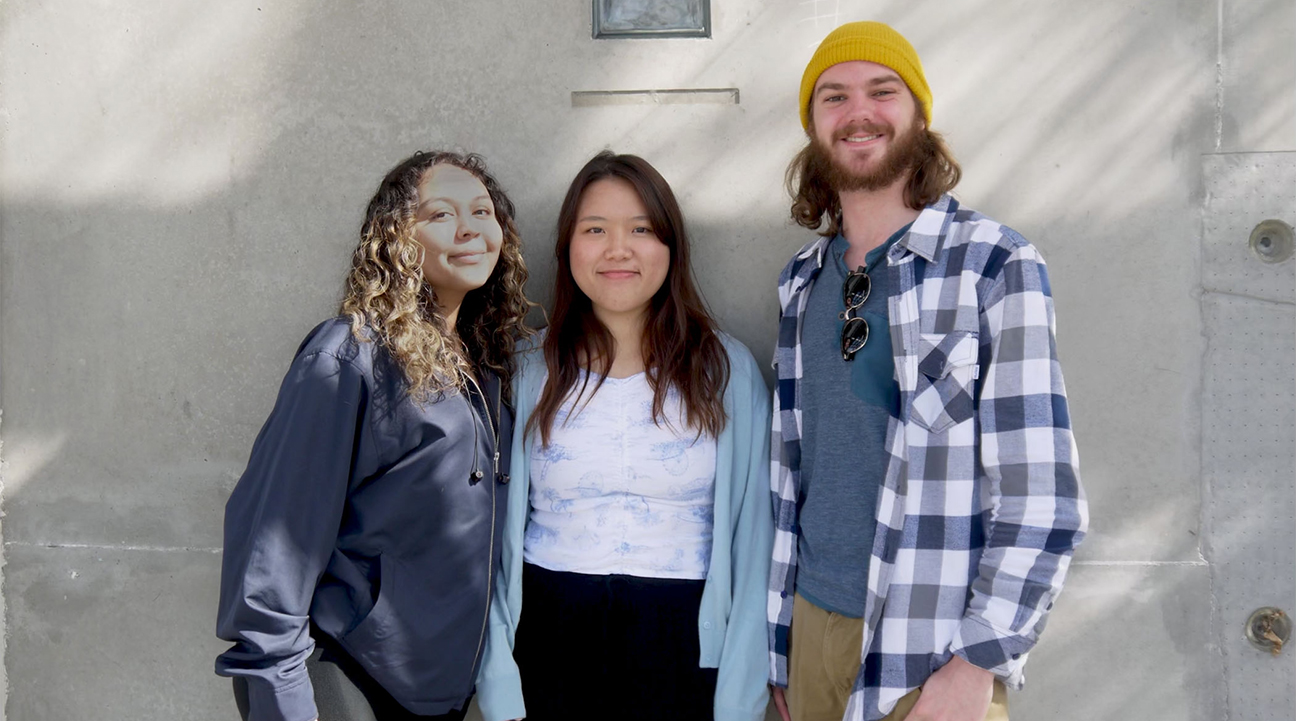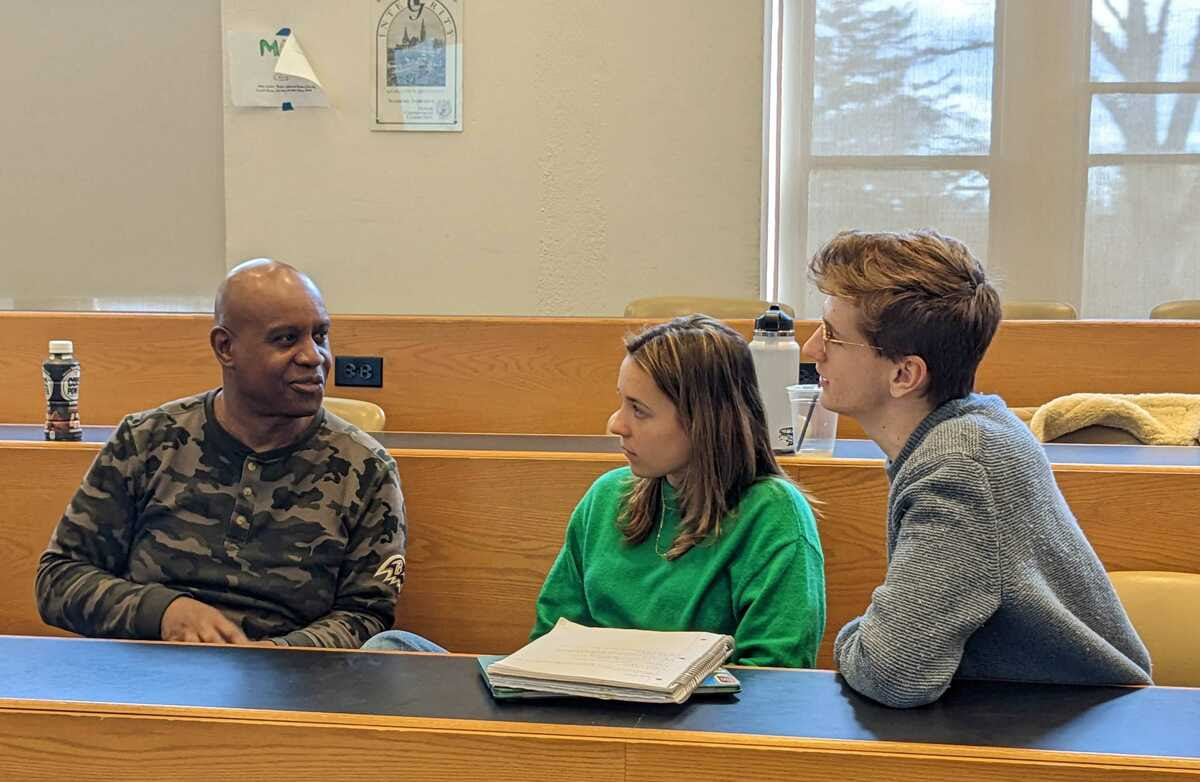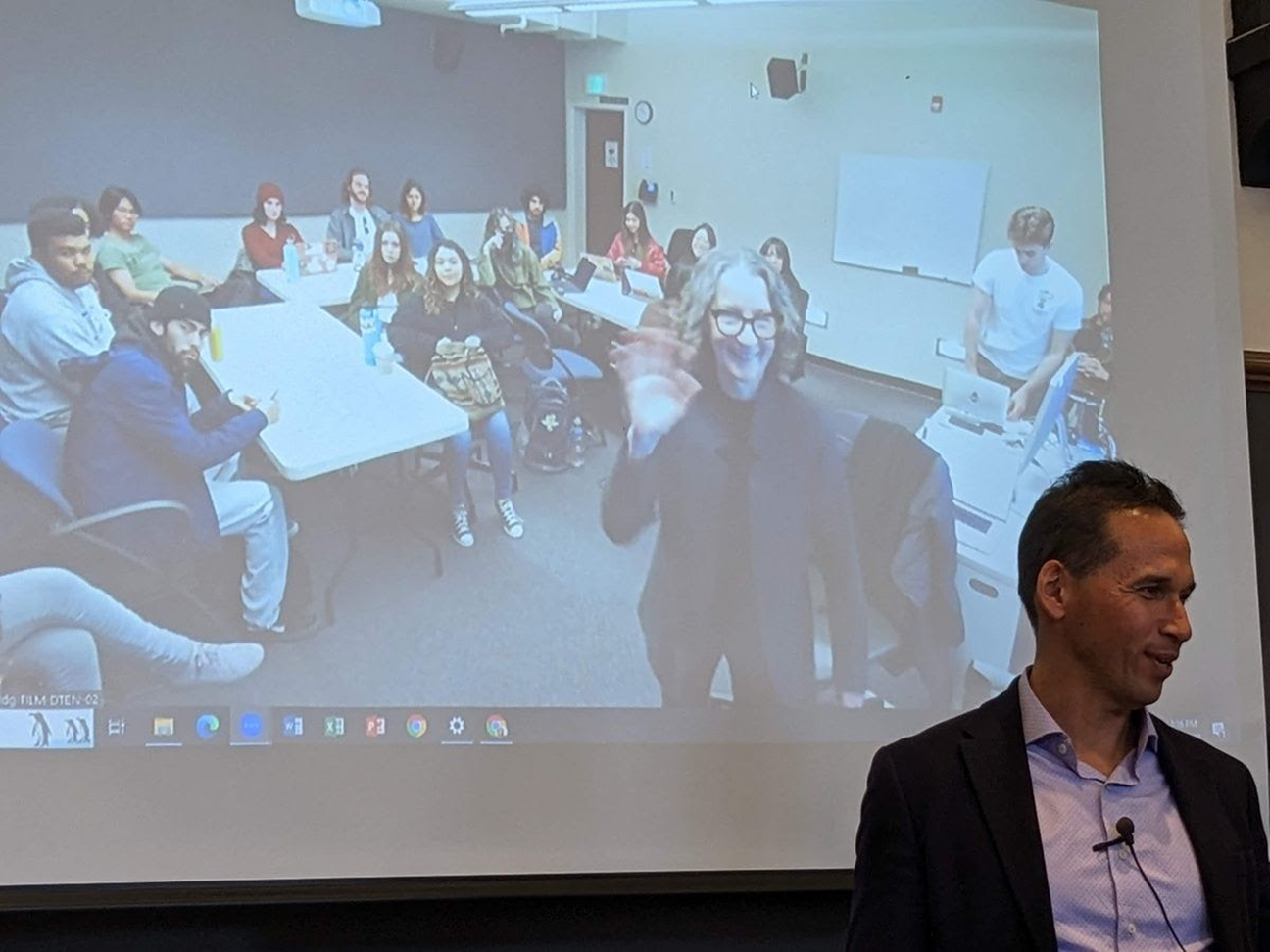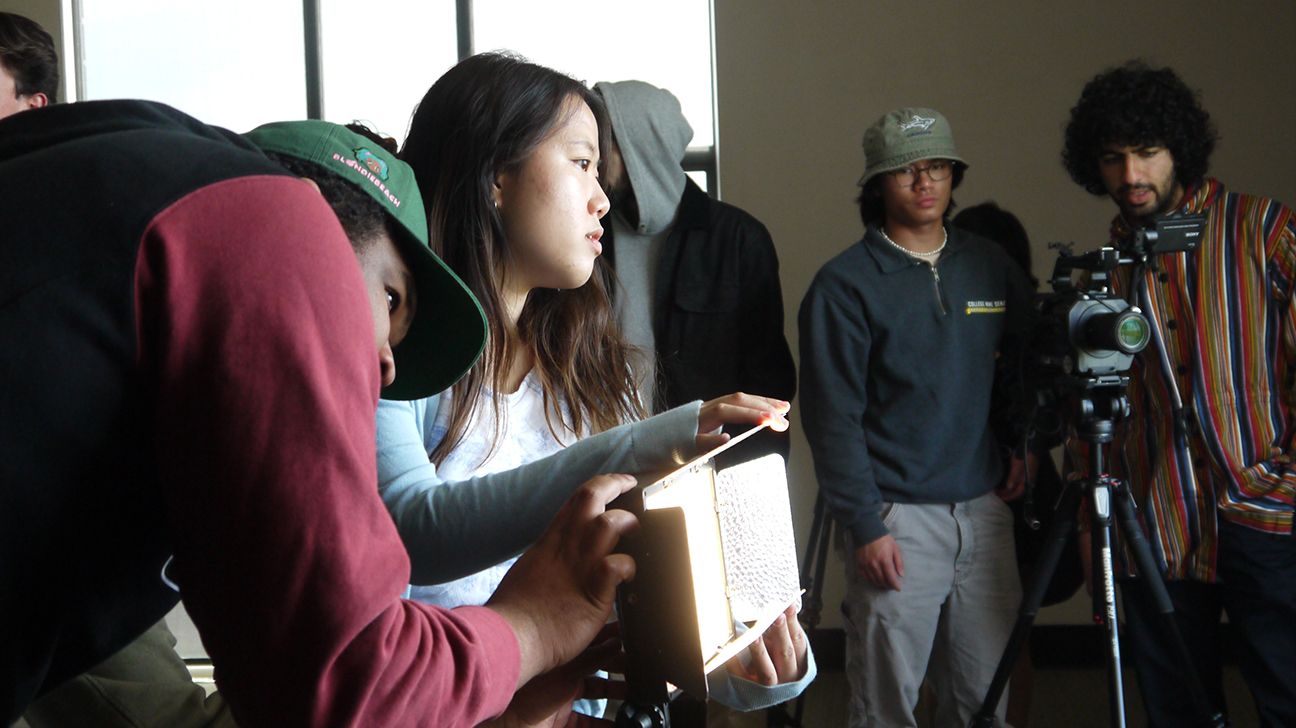By Charlotte West, Open Campus
“There was a level of emotional impact from this project that I’ve never really received from any of the other work that I’ve done,” said film student Keith Gelderloos.
This story is published in partnership with Open Campus, a nonprofit newsroom focused on higher education. Subscribe to College Inside, an Open Campus newsletter on the future of postsecondary education in prison.
When someone calls from prison, everything stops. “Tim’s on the phone!” professor Sharon Daniel shouts out, interrupting her film class at University of California-Santa Cruz.
Sixteen students put down their lights and camera equipment and gather around Daniel as she holds out her phone. “Put it on speakerphone,” someone says.
The deep voice on the other end of the line is Tim Young, who has been incarcerated on California’s death row at San Quentin State Prison since 1999. Last year, Young was the subject of a documentary film made by Daniel’s students.
Daniel’s film students in Santa Cruz are working with students at Georgetown University in Washington, D.C. on a project focused on wrongful conviction. Five years ago, law professor Marc Howard started his “Making an Exoneree” class, a riff on the name of the Netflix series “Making a Murderer.”
Daniel began working with Howard last year after she submitted Young’s case for consideration.
Their collaboration is one part criminal investigation and one part narrative storytelling. Teams of three Georgetown students are paired with three Santa Cruz students who all focus on a single case. The Georgetown students focus on research and fact finding while the Santa Cruz students create a documentary.
The undergraduates — most of whom have never been in a prison or even interacted with someone who is incarcerated — gain firsthand experience with the criminal justice system. They dig into decades-old cases and document what they find. They not only get to know the intricacies of what happened, they also get to know the person behind the case.
“The fact that they have had a chance to interact with system-impacted people such as myself means that they will be better suited to go out into the world and to protect and promote the interests of justice,” Young said during a recent phone call from San Quentin.
Young also worked with artist jackie sumell to create Solitary Garden, a “participatory public sculpture and garden project” on view at UC Santa Cruz Baskin Art Studios. The sculpture resembles a 6’x9’ U.S. solitary confinement cell — similar to the cell Tim has occupied for more than two decades. The “cell” in the sculpture is surrounded by a garden “which Tim designed via letters and drawings to students and volunteers, who cultivate it as his proxies,” the university’s Mary Porter Sesnon Art Gallery states.

In some instances, the Making an Exoneree students’ work can even help pave the way to freedom. Since 2018, five wrongfully convicted men came home after participating in the course, including Kenneth Bond, who was released from a Maryland prison in early February. In Pennsylvania, a group of students gave a presentation to Philadelphia district attorney Larry Krasner’s conviction integrity unit. And as a result of the students’ investigation into Young last year, a major law firm has agreed to look into his case.
Making education matter
Howard became a lawyer because his childhood friend, Marty Tankleff, spent almost two decades behind bars for a crime he didn’t commit. Tankleff is now co-teaching the course — he immediately enrolled in college after his release in 2007, and got a law degree. He commutes to Washington D.C. from New York once a week to teach the course with Howard.
Howard and other faculty spend the fall semester vetting case options for those that have the potential to be overturned — reasons could be anything from ineffective counsel to missing evidence. The students dig through court transcripts, police reports, and videotapes and re-interview witnesses and the subjects themselves.
“We want our students to become sleuths,” said Howard, who also directs Georgetown’s Prison and Justice Initiative. Sometimes cases stall, but even then, “the students…have a better understanding of what actually happened than the official records.”
Howard and Tankleff show the students how to navigate the process ethically, as well as practically, such as not talking about sensitive topics on recorded phone lines. In some cases, Howard or Tankleff will end up representing the subject, which allows them to have legal visits.
What they’re after is the truth, even if it turns out that someone wasn’t wrongfully convicted.
“If you find out bad information, you have to work with that, and then potentially even drop a case,” Howard said.
The students are supported with an incredible amount of resources. They have access to a vast network of experts, ranging from private investigators to professors who specialize in shoe print analysis.
One of those experts is Arlando “Tray” Jones III, who was the subject of one of the student investigations two years ago. After being released last summer, he’s sitting in the same classroom where a team of student investigators previously dug into his case. He talks the students through how to build a relationship with their subjects.
“Make sure you come from a place of genuine compassion rather than a place of pity,” he said.
Jones has stayed close to three students who worked on his case – one is even now in law school at Georgetown. He said that interacting with them gave him hope at a time when he had nearly given up.

The students aren’t called upon to believe a person’s innocence, they are tasked with investigating the facts, Jones said. “These students who would otherwise be sheltered in the ivory tower are challenged to go out there and pursue justice and make their education matter.”
Howard also hopes that in the future more universities might offer similar classes focused on wrongful conviction. This spring, the project expanded to include Princeton, where students are investigating an additional five cases.
“My hope is deeply renewed”
By the end of January, the Georgetown students already knew the ins and outs of their cases. Jacob Livesay, Isabella Todaro, and Annie Kane stood in front of the class to present the progress they’ve made on Sarah Jo Pender’s case in Indiana.
Pender was sentenced to 110 years in prison after she was convicted of murder in 2002. Todaro told the class that there are questions about the validity of a letter she supposedly wrote that was used against her in court, among other issues with her case.
Pender’s father sent her case to Making an Exoneree a few years ago. She had almost given up when she received a letter from Georgetown saying that they would look into her case. “It was like winning a full scholarship to law school,” Pender wrote in an email.
“Now, after speaking with Annie, Jacob and Isabella, my hope is deeply renewed,” she wrote. “I was also surprised at the amount of resources that they have access to…Just mind-blowing. And heart-warming to know these people all care about doing the right things in justice and are helping me get home.”
Kane said she was excited when she found out that her team would be working on Pender’s case. “I didn’t go in necessarily with any expectations for what I was going to find out about her,” Kane said. “But the moment I started reading through her case, I was like, ‘Oh, my gosh, she’s completely innocent.’”

In Santa Cruz, Daniel’s film students Keith Gelderloos, Cindy Ortiz, and Bonnie Yam are working on a documentary about Pender’s case. Over spring break earlier this month, the two groups of students met each other in Indiana. The Georgetown students were able to visit with Pender during a legal visit with Tankleff.
Gelderloos, a film and digital media major, said making the film has given him new insight into the lives of people who have been impacted by the criminal justice system — and he hopes it will bring the same understanding to others. “There was a level of emotional impact from this project that I’ve never really received from any of the other work that I’ve done,” he said.
Enlarge

Have something to say about this story? Send us a letter.